Spring Fever
Snow melting. Sun shining. With mercury rising and an itch to get back on two wheels, it won’t be long before you’re back on the street again. If you’re not lucky enough to live in a year-round riding zone, you and your motorcycle have probably been dormant for months. Please consider these sure signs of spring as you as you saddle up this season:
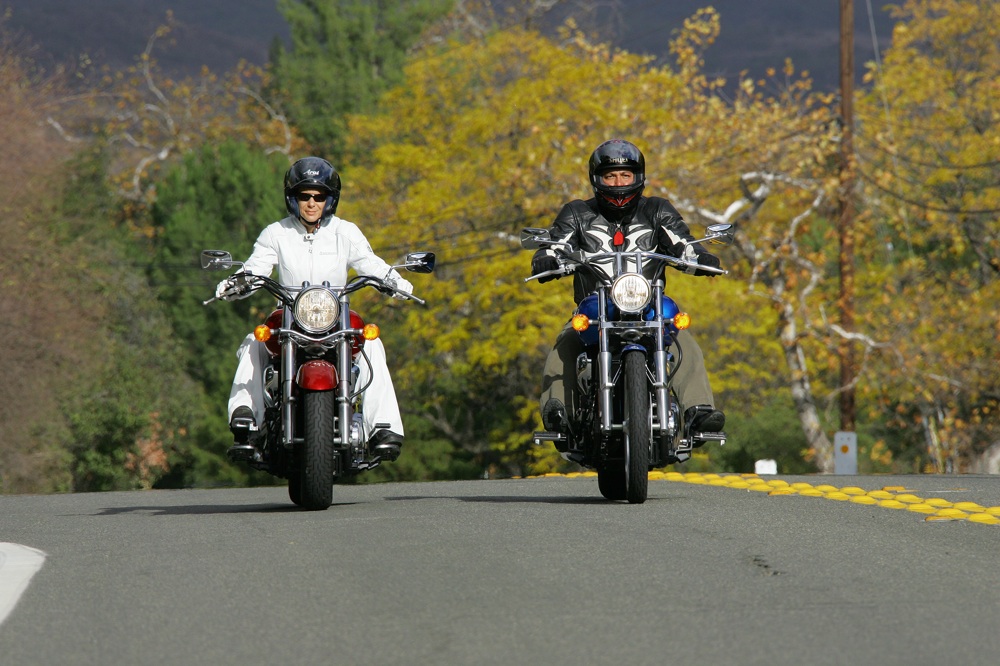
1. Run through TCLOCS
Even if you’ve stored your motorcycle in a closed garage and trickle-charged the battery with a battery tender your bike is still subject to deterioration and damage. Critters chew. Cables come loose. Hoses can crack. Before you hit the road, give your ride a full circle inspection. Carefully check everything on your bike, from tire pressure to fluid levels, before you put your wheels to pavement. To help you remember what to inspect, the Motorcycle Safety Foundation suggests the acronym TCLOCS.
T – Tires and Wheels
C – Controls
L – Lights and Electric
O – Oil, Gas and other Fluids
C – Chassis
S – Side Stand
Your owner’s manual has more specific information regarding the items on this checklist. For a detailed article on inspection points, refer to the story “Is Your Bike Ready to Roll?” in the Safe Riding Tips section of WRN. And don’t forget your bike’s routine maintenance to keep it in tip-top shape!
2. Be mindful and extra cautious of road debris
The snow may be melting, but your favorite roads still need a good cleansing. Many riders won’t go out until after the first rain has washed the road of salt, dirt and gravel left behind by receding snow. Add sand, leaves, branches and twigs to the mix, and you have a potpourri of debris that collects at the edges of the roadway and at ends of driveways, near curbs, and in corners, traffic circles, roundabouts and rotaries.
Warm afternoons and cold nights increase the possibility of black ice, which is actually quite transparent and difficult to see. Patches of snow and frost will linger in shady areas. Quick thaws can cause high water in some places. All of these potential hazards can compromise your traction.
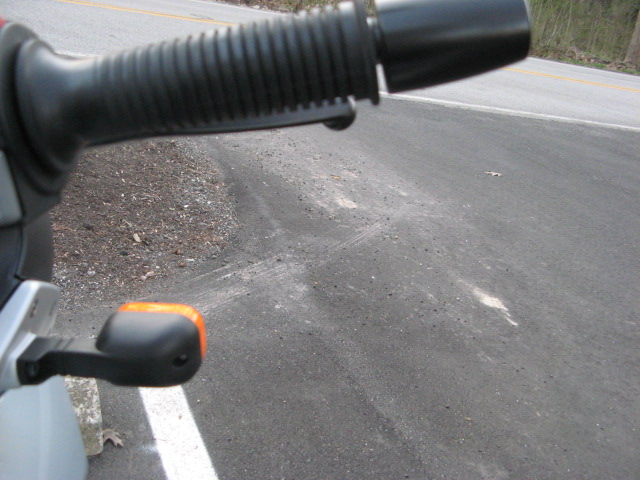
Scan far enough ahead so potential hazards don’t surprise you. When you encounter these conditions, don’t panic. Maintain a safe speed, avoid braking or downshifting, and keep the bike upright as you ride through. Coast over road debris, and avoid excessive lean in curves. If possible, large potholes should be avoided. If not, keep your head and eyes up, rise off the seat, stand on the pegs, and shift your weight back slightly to avoid being pitched from the motorcycle.
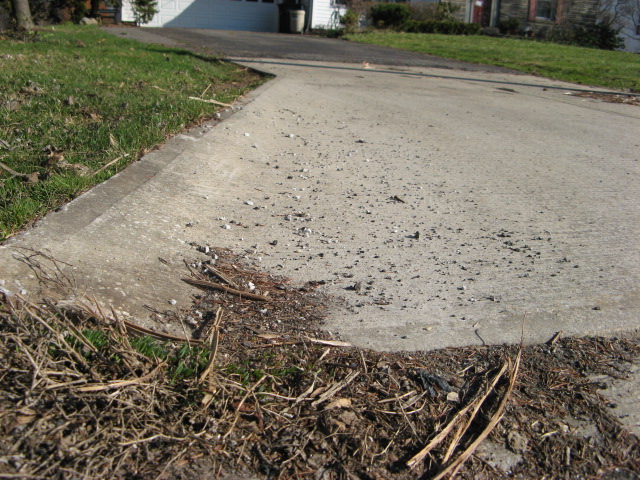
Cropping up along with daffodils and tulips are orange barrels! Roads suffering from frost damage, cracks and potholes may see the arrival of repair crews in spring. Be aware of changing conditions and construction zones—coming soon to a roadway near you!
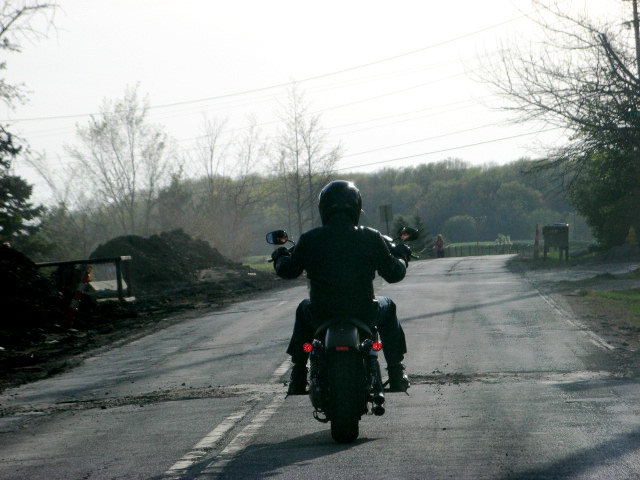
3. Take it slow at first
Your bike isn’t the only thing awakening from hibernation. Your rusty skills need a wake up call too! Reacquaint yourself with the feel of your clutch and operation of your brakes. Take it easy your first few times out. Go a little lighter in the leans. Give yourself more time and space to stop. Get your head back into the game by reading or watching videos on safe cycling. You may also benefit by preparing yourself in a parking lot or taking a refresher class.
4. Be prepared for rapidly changing weather conditions
Spring weather means everything and anything under the sun. Rain. Sleet. Heat. Wind. It can be snowy and icy in the morning, sunny and 70 in the afternoon. Plan for a variety of weather conditions if you’re going to be out for any appreciable amount of time. Dress in layers. Pack a rain suit. Check your local weather forecast early and often. Conditions change rapidly in the spring no matter where you ride, so if you don’t like the weather, wait it out.
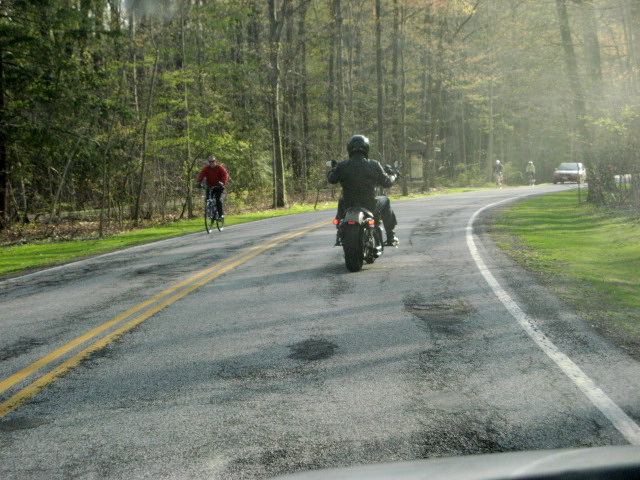
4. Watch for others enjoying spring fever
Pedestrians. Joggers. Bicyclists. Walkers. Car drivers tooling around with the windows rolled down and stereo loud. There’s a buzz of activity out on the road. Even animals seem to have spring fever! Expect to avoid deer, dogs, cats, squirrels, moose, armadillo, and children when you’re out riding this spring!
You can download theTCLOCS check listto use before the first and every ride of the season.
Got more tips! Share them with us in the comments section below.
About the Author
Susan Rzepka Orion is a certified MSF RiderCoach and Rider’s Edge Instructor who loves to ride, write, and help others who want to do the same. You can find her on the road on her BMW F 650 GS.

Related Articles
Is Your Bike Ready to Roll?
DIY Motorcycle Tire Maintenance and Inspection
A One Day Class for Experienced Riders: MSF Advanced Rider Course
More Safe Riding Tips articles

Awesome! This is a very good read for beginning the riding season.
Let’s add an “i” in front of T-CLOCS, which stands for insurance.In New York we are lucky to ride six months out of the year and motorcycles are considered recreational vehicles and fall under different insurance laws. This means that the insurance a motorcyclist is required to carry does nothing to protect the rider! Make sure that your coverage protects you as much as it protects the other guy. Are you covered for your medical costs—deductibles and copays? Considering that 75% of drivers out there have the bare minimum coverage (which for most states is $25,000 per person, $50,000 per accident), do you have uninsured/under-insured coverage? Have you paid off the loan on your bike but haven’t notified your insurance? Should you experience an accident your insurance is going to pay they bank, but don’t worry, you’ll get the money eventually.But the bottom line is this: When your insurance agent or broker says you’re fully covered, what does that really mean? Check your motorcycle insurance policy to make sure! Ask if you are covered as well as your assets.
Great advice, Dawn!For more articles about choosing and understanding motorcycle insurance policies, check out WRN’s insurance articles here.
The best idea I have for starting out riding in spring is to take a refresher course! My husband and I just completed the training course and gained a lot of confidence and also re-learned a lot of maneuvers that were rusty in our minds over the last winter! I’m 73, ride a H-D 1200 Sportster; he’s 70 and rides a V Star 950). We are fair weather riders but still need some extra knowledge for the coming season!
Great idea Linda. We recommend the MSF’s Advanced Rider Course for experienced riders. We reviewed that class here on WRN.
Most of us fill our tanks to the top, add fuel stabilizer, then take the bike for a quick spin and put it away for the winter. In spring, remember to run your tank down as much as possible to use up as much of your old fuel stabilized gas as possible. This way, your first fill up of the season will be puting fresh gas in your tank and not mixing with a lot of the old gas, even it was treated.
Thank you for this timely article about preparations for spring motorcycle riding. I enjoy all your articles in Women Riders now. Last weekend my hubby and I decided to go on our first ride. We wiped the HDs down, checked the tires and oil, and all the other things to get ready. Then I thought I had all my “gear” easily accessible. I had everything except my favorite gloves. Needless to say my hubby found them just where I always lay them. The ride went well, the gear was all found, and afterwards as I was taking my boots off I saw how worn my soles were. The boots are still good but I am definitely in need of new soles to provide the best traction. So off to the shoe repair shop. Let’s not forget to also check the condition of our riding boots. They also provide a needed safety factor to our rides.
Hi. Just two quick thoughts in response to a very mindful article.Gear check: My light smoke-colored visor was scratched last fall so I replaced it this year. Before my first ride around I go to the nearest parking lot and practice the following maneuvers. (I have a tendency to be headstrong and overconfident so better to jump start the muscle memory after a few months of dormancy). • Stops/starts at both slow speeds and from 35-40 mph.• Turns—left and rightespecially from a complete stop and using both turn signals and hand signs.• Figure-eights just like back in beginner class. And just for giggles, I noticed an incredible improvement in my ability to balance on my bike when I started using a rebounder or mini-tramp. There is an alignment that takes place in the equilibrium area of the brain that tandems with the muscle memory of higher bouncing that enhances balance. Thank you for an amazing and always informative site!
Interesting advice to follow.
I thoroughly enjoy your articles. This makes so much sense especially around our area. Right now we keep getting rain/snow/sunshine, a bit of everything and the gravel at the intersections is brutal. I am still a relatively new rider so am cautious and my husband typically does not take his bike out for almost another month. Love your newsletter.